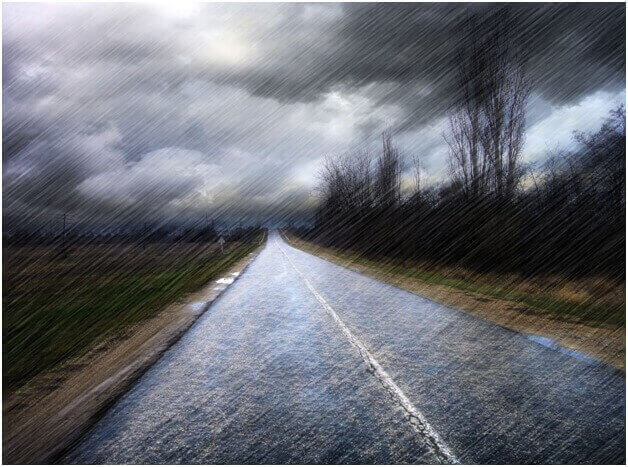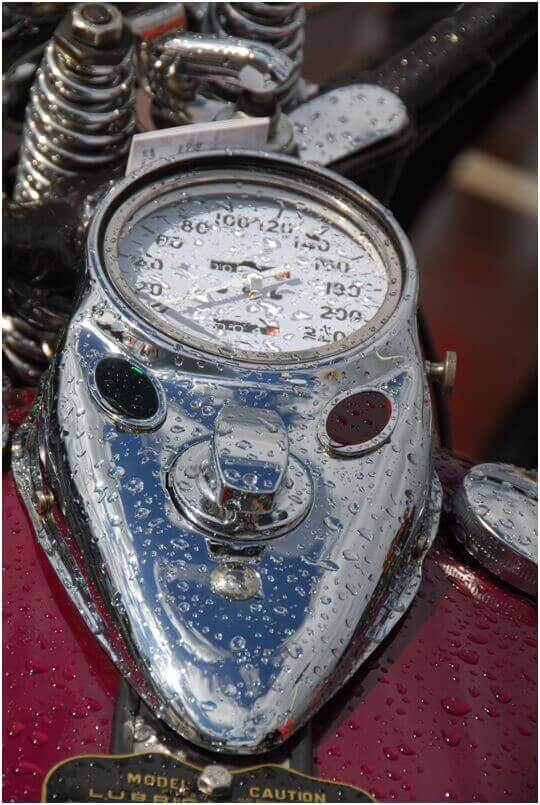You’re on the road when the blue skies suddenly become overcast and rain starts to fall. First it’s a few drops at a time, but eventually it becomes a torrential downpour. This can be daunting enough when you’re in a car, with a roof over your head and your windshield wipers working at maximum speed, but it’s even worse when you’re on a motorcycle.
Inclement weather is one of the leading causes of motorcycle accidents. Regardless of your level of experience, it’s best to avoid riding your motorcycle in the rain, because rain creates all kinds of hazardous conditions for motorcyclists. You may trust your skills and ability to handle the vehicle when the skies are clear, but you may not be prepared for riding in bad weather. However, there may be some situations (especially in Florida) where you get caught in the rain, or you need to ride in the rain to get from Point A to Point B. In those particular cases, follow these safety tips to avoid injury.
6 Tips for Riding in the Rain
1. Be smooth. The Motorcycle Safety Foundation says that one of the most important things to remember when riding in the rain is to have smooth control. Be easy on your throttle and brakes, but balance your grip at the same time. Don’t accelerate on turns; wait until you’ve completed the turn to speed up.
2. Slow down. You should slow down in any kind of vehicle when the weather’s bad. On a motorcycle, slowing down will make it easier to stop suddenly if there’s a hazard in your path, and lower speed will decrease your lean angle on turns, making it less likely that your motorcycle will slip out from under you.
3. Leave several car lengths between you and the vehicle in front of you. It’s always a good idea to leave enough room between you and the vehicle in front of you so that you’ll have time to react if they suddenly swerve or slam on their brakes. This rule becomes even more important when the slick road will make it harder for you to come to a quick stop without sliding. Pay attention to the traffic in front and to the sides of you, so that you can quickly find an escape route if there’s an accident ahead of you.
4. Use engine brakes on corners. When taking tight turns, use your engine brakes by letting go of the clutch and letting your engine’s RPMs drop so that you naturally decelerate. This will reduce your likelihood of skidding.
5. Watch out for common rainy weather hazards. Keep an eye out for things such as deep puddles, potholes, manholes, railroad tracks, and oil spills, all of which can create extra slick surfaces in the rain and cause you to lose control of your motorcycle. Also, be careful at stop signs, toll booths, and parking lots, where oil leaking from stopped vehicles can create an especially slippery surface.
6. Get off the road if you feel unsafe. If it suddenly starts pouring and your traction and visibility are compromised to the point that you feel unsafe, find somewhere safe to pull over (ideally somewhere with a roof or overhang for you to stand under) and wait for the rain to die down. Trust your judgment; it’s never worth putting yourself in a risky situation just because you’ll be able to reach your destination a little faster.
About the Author:
Jeffrey Braxton is a trial lawyer in Fort Lauderdale who has devoted his 22-year career to the practice of personal injury law. As lead trial attorney for The South Florida Injury Law Firm, Jeff has litigated thousands of cases and is a member of the Million Dollar Advocates Forum, an exclusive group of attorneys who have resolved cases in excess of one million dollars.




